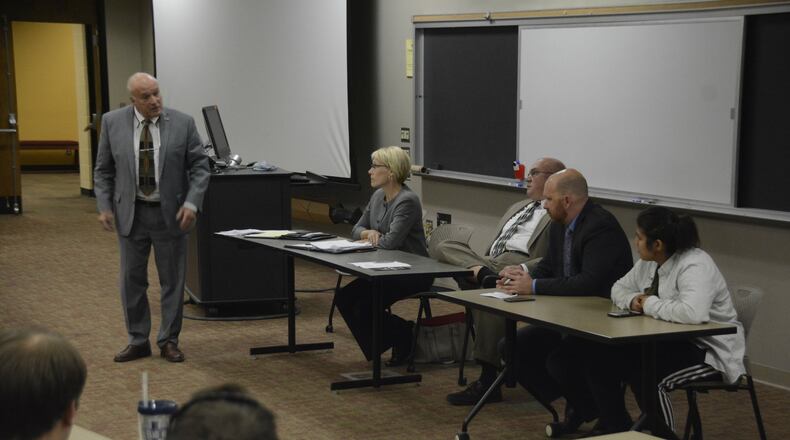Gary Daniels, a chief lobbyist for the ACLU, told the few dozen students at the forum, most of whom were criminal justice majors, that Issue 1 would lower the penalty levels of non-violent, first-time drug offenders; reduce the prison population; and reinvest savings in reduced prison costs into drug treatment programs.
The controversial Ohio Issue 1 is mostly supported by out-of-state funders, and according to campaign finance reports filed this summer, more than 90 percent of the Yes on Issue 1 campaign's funding is from outside Ohio.
ELECTION 2018: What is State Issue 1 on the Ohio ballot?
Anjali Kapoor, a junior computer science major at The Ohio State University, was one of the discussion’s panelists and worked on Issue 1 when she circulated petitions for the ballot initiative earlier this year. She said people are talking more about this being a criminal justice issue when it should be public health issue.
“No amount of prison time or jail time is not going to convince your body that you need that drug. The only thing that helps people is actually treating it like a public health issue,” she said. “Prosecutors only have one tool set. They say they want to really help fi this issue but the only tools that they have is imprisonment. But when you open up the idea that this really is a public health issue, that is an epidemic that should not be treated by our criminal justice system … then you open up the idea of a lot of other tools that have been proven to help people.”
In response, Gmoser said Kapoor was “ignorant” to assume prosecutors don’t want to help addicts.
“It’s truly an ignorant statement, and it’s a statement that’s not based upon fact. It’s based upon your supposition of a belief that you hold that prosecutors only have one interest,” he said, later adding, “You are obviously ignorant about the truth.”
Gmoser also questioned why Issue 1 had to be a constitutional amendment, rather than a legislative action.
ELECTION 2018: Learn more with our online Voter Guide
Daniels said the issue is a constitutional amendment because the legislature “has no interest” in improving sentencing guidelines or reforming prisons.
“It’s time we do something” about the overcapacity of people in prison, he said.
Ohio has about 50,000 people incarcerated in its prisons, which is about one-third over the state’s capacity, Daniels said.
The constitutional amendment is being proposed because “as a lobbyist who deals with elected officials at the Statehouse … (lawmakers) simply have no interest in reforming our drug laws here in Ohio, reforming our sentencing laws,” he said.
The importance of reducing low-level felonies to misdemeanors is to ensure people remain productive citizens, according to Daniels.
But with the 24,000 people with felony records let out of prison every year, he said, “If you’ve got a felony record, good luck getting a decent job, a decent place to live.”
Spaeth said he has family members of addicts charged with felonies pleading to send their loved one to treatment, but unless the judge and court has “a big enough stick” to make treatment more appealing than prison you can’t make them go to treatment. But Issue 1 “robs” them of that ability, he said.
“They have to be so fearful of going to prison that they’re going to treatment because nobody else in their life could make them get the treatment,” Spaeth said. “They have one goal is to get their next fix, to chase that first high, and they spend the rest of their lives, or until they get clean, chasing that first and best high. And it’s consuming.”
And he said he “can’t do anything unless that criminal offender commits a new criminal offense.”
WHAT IS OHIO ISSUE 1
If voters approve Issue 1, it would:
• convert felony 4 and felony 5 drug possession and drug use crimes to misdemeanors with no jail time for first and second offenses if they are committed within a 24-month period;
• keep drug trafficking crimes as felonies;
• prohibit judges from sending people to prison if they violate probation with something other than a new crime, such as missing an appointment;
• cut prison time for offenders who complete rehabilitation programs, except those convicted of murder, rape or child molestation;
• put money saved by fewer people going to prison into drug treatment and crime victim programs;
• allow people convicted of certain drug crimes to petition the court for re-sentencing or release or to have the charge changed.
This story contains previous reporting by Staff Writer Laura Bischoff.
About the Author

